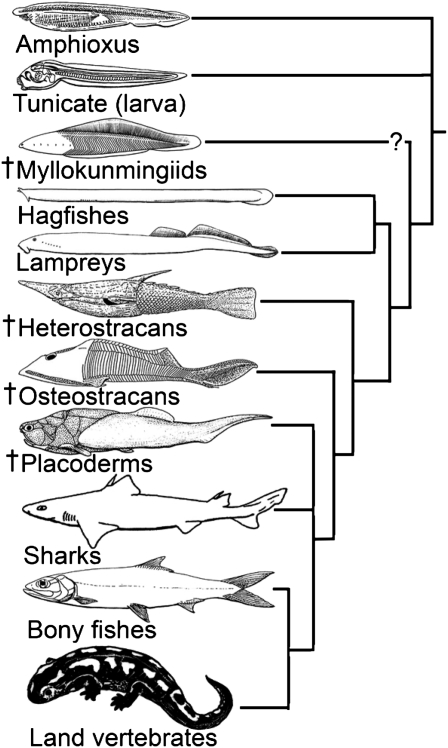Fig. 1.
Evidence for monophyly of the cyclostomes (hagfishes and lampreys) based on microRNAs distribution and expression profiles among vertebrates deprives phylogeneticists from the possibility to explore the stepwise assembly of the vertebrate body plan on the sole basis of phenotypic characters of these living jawless vertebrates. The pattern of the chordate tree now returns to what it was over a century ago, except for the relationships of extinct groups, such as the jawless ostracoderms (e.g., heterostracans and osteostracans) and the jawed placoderms. The investigations by Heimberg et al. (11) on microRNAs suggest that the cyclostomes, particularly hagfishes, underwent a spectacular degeneracy since their divergence from other vertebrates (that is, the loss of numerous phenotypic characters) and that the most recent common ancestor of the vertebrates was probably more complex than the living cylostomes. This discovery may again question the status of the ostracoderms as jawless stem gnathostomes. †, Palaeozoic groups.

